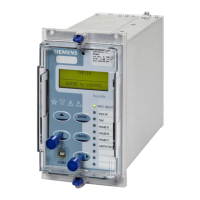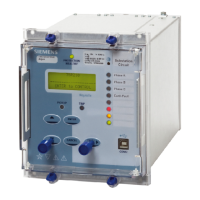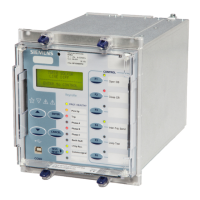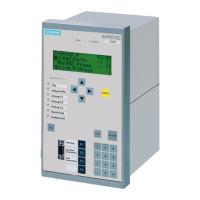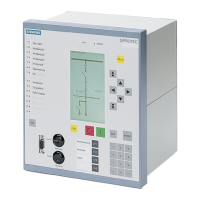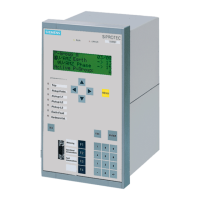7SG12 DAD N Applications Guide
1. Introduction
These notes give guidance on the application of the DAD-N. Reference should also be made to the
Commissioning section, which provides detailed set-up instructions.
2. Differential Protection
A Busbar is a zero impedance connection joining several items such as lines, loads etc. Therefore at
busbar stations the switchgear is stressed, at times of fault, to levels higher than occur elsewhere on the
system. It is therefore important that faults are detected and cleared as quickly as possible. In addition,
since Busbars act as connection points in an electrical system, it is important that good fault discrimination
is achieved with only the minimum amount of plant necessary to clear the fault being disconnected.
Differential unit protection is the most obvious solution to these requirements.
Differential protection works on the basic premise that the currents which enter a protection zone should
be equal to the currents leaving it. Any discrepancy, allowing for measuring errors, etc. indicates an in-
zone fault. By contrast an external fault will produce no discrepancy in the measured currents.
ADCB
2500A 4500A 3000A
5000A
10000
A
F1
15 kA
5A 9A 6A 20A
No current
through
relay
EXTERNAL FAULT of 15 kA
RELAY CURRENT = 5 + 9 + 6 - 20 = 0A
ADCB
2500A 4500A 3000A 5000A
F2
15 kA
5A 9A 6A 10A
30A
through
relay
INTERNAL FAULT of 15 kA
Relay Current = 5 + 9 + 6 + 10 = 30A
Figure 1 – Current Differential Protection
Good fault discrimination is achieved, therefore. In addition, because the protection is based on simple
current level detection it is extremely fast. Typical operate time for a high impedance scheme is <20ms.
Busbar faults are almost always permanent faults and are therefore not suitable for Auto-reclosure.
Instead every source connection to the Busbar must be broken and isolated.
3. High Impedance Differential Protection
In a High Impedance current differential scheme, the secondary winding of the CTs positioned at all entry
and exit points of a protected zone are summated external to the protection relay. These entry and exit
points must include all incomers, sections, couplers and outgoing feeders. The principle is therefore that
one protection Relay must be provided for each protected zone.
The principles of such a scheme can easily be extended to a 3-phase system. In effect three separate
protection circuits, each covering one phase, are installed. Each phase system is joined together at the
star point of each set of CTs with the star point always connected away from the protected zone. These
will provide both phase-phase and phase-earth coverage.
The High Impedance Busbar protection must satisfy 2 criteria:
• It must be stable so that operation does not occur for any faults external to the protected zone.
• It must be sufficiently sensitive so that any faults in the protected zone are detected.
To achieve stability, the protection must be designed so that it is tolerant to any current imbalances due
to CT saturation effects resulting from external (through) faults. Transient stability under through fault
conditions is a problem with many forms of differential protection due to variations in CT magnetising
characteristics. As saturation is approached, the CT output current waveforms become increasingly
distorted with a high percentage of 3rd and other higher odd harmonics. These variations can lead to
unbalanced currents causing mal-operations.
©2010 Siemens Protection Devices Limited Chapter 5 Page 3 of 16

